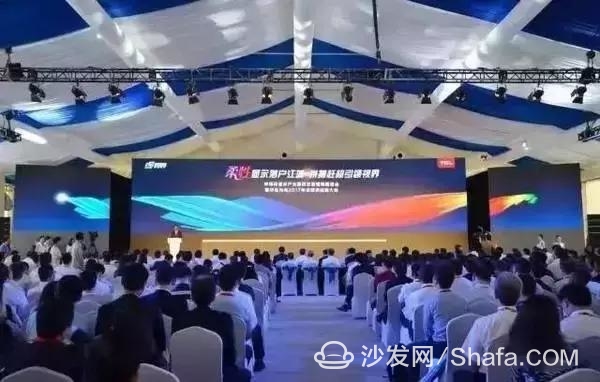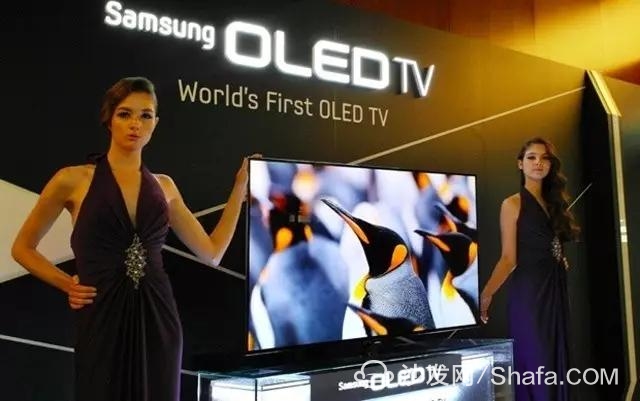
According to an official manuscript provided by China Star Optoelectronics, the project is expected to start production in the second quarter of 2019 and mass production in the first quarter of 2020. After full production, the annual output of AMOLED smart phone display panel is approximately 1.16 million m2, which can meet the global demand for 5% of AMOLED smart phone screens.
At this point, three members of the quantum dot camp--Samsung, TCL, and Hisense--have entered the OLED field, leaving only one company, Hisense, to remain alone.
The industry believes that two of the three largest members have entered the OLED field, indicating that the Quantum Array camp has already existed in name only.
The latest news about OLEDs is that BOE, which has achieved mass production of small-sized OLED panels, may get orders from Apple.
"At this stage, quantum dots pose no threat to OLEDs."
With more and more mobile phone products being upgraded from LCD screens to OLED screens, OLED replacement for LCDs has been fully expanded in the mobile phone field, and Apple’s iphone8, which will be launched in the third quarter of this year, will become the end of this mobile screen upgrade battle. The work.
In the next step, the curtain of OLED penetration into notebooks and flat panels will soon follow.
What about the next step? Of course, the penetration of OLED into the television field. In fact, this process has already begun.
Obviously, the replacement of liquid crystal by OLED is a process that gradually penetrates from a small screen to a large screen.
In contrast, quantum dots are stuck in a single area of ​​television and are not accepted by display products such as mobile phones, notebooks, and flat panels.
Even in the television field, quantum dots are notorious. Quantum-dot TV at this stage cannot even be called an "entry-level" product, because quantum dots do not exist as an image here but exist as a backlight for a display.
No wonder netizens exclaimed: "I may have bought a fake quantum dot!"
The true quantum dot television must exist as a visualizer. At the moment, such quantum dot TVs still remain at the theoretical level, and even concept products have not come out.
Strictly speaking, at this stage, quantum dot TV and OLED TV do not belong to the same dimension product. At this stage, quantum dot TV is more like an improved carriage, and OLED TV is a brand-new automobile.
If the quantum dot camp cannot launch a true quantum dot television (ie, an electroluminescent quantum dot television) within the next two years, then quantum dot television is likely to repeat the short-sightedness of the rear projection TV.
99% of people observe OLED angle is wrong
I found that almost all of us are looking at OLED imagery when they are observing OLEDs, obviously not grasping the essential attributes of OLED as a revolutionary display technology.
Seeking truth from facts, OLED is a display technology of image display, and there is no significant difference between high-end LCD (including QD TV at this stage). This fact can be used to explain the questions in the minds of many journalists: “Why did QD TV get so bad when I attended the OLED conference? And when I participated in the QD conference, the OLED TV was adjusted so badly. "The reason is here: There is little difference in image expression.
Regardless of how the two images are tuned, there is a bit that Quantum TV can't do anyway. That is: The flexible display properties of OLED TVs.
The so-called "flexible display" means that the display screen has variable attributes such as curling and folding. LCD does not have this property at all, and quantum dot TVs based on liquid crystal display technology certainly do not have this property.
This property is precisely the greatest value of OLED as a new display technology.
Someone said this: There is no need for a flexible display. The TV is either hanging on the wall or placed on the TV cabinet. Who is going to pick it up?
Obviously, this is a very narrow and rigid thinking, using preconceived ideas to see new technologies and new things.
If you have a vision beyond ordinary television, you will find that flexible display technology is really important.
To give an example, the future car will be a self-driving car. The decorative space in the car will become a surrounding display space. There will be supermarkets, gas stations, and movie theaters nearby. You can even sit inside and watch movies. , reading e-books, and even shopping. However, the irregular space in the car cannot be displayed in full screen by liquid crystal. Who can? Of course, OLEDs, because OLEDs have flexible display properties.
We say that the future era must be an era of "display everywhere". To achieve "display is nothing," the display carrier must have flexible properties to display at any place where you want to create a display, as a non-flexible display technology. The liquid crystals (including quantum dots at this stage) cannot carry this mission.
I expressed my opinion five years ago that the appearance of the flexible display technology of AMOLED is not how many times it improves the resolution, but because it will increase the market value of display products (including television) by N times. It is the greatest value of OLED as a new display technology.
In fact, the future OLED TV is mobile and portable. When you want to see it, you can just expand the screen. When you don't want to see it, you can close it like a movie screen.
The late into the OLED passive
It was precisely because we saw that the OLED trend was unstoppable. Only a large amount of funds flocked in. In 2016 alone, there were more than 320 billion yuan of funds entering the world; while the quantum dots were just the opposite, there was even a capital flight situation. There were "quantum dots." "Qiao Vision," the company's "father," has reported "divergence of major shareholders."
Cleverness does not create trends, but embraces trends. Resisting the tide only makes one lose a lot of confusion.
We see that Samsung is very smart. As the leader in the Quantum Dot camp, Samsung has always “stepped on two ships†and did not give up its efforts on OLEDs, even the monopoly of global small-size OLEDs. Therefore, Samsung's criticism of OLED is all retained.

TCL has realized what OLED means. As the first company to launch quantum dot TV in China, TCL's attitude towards OLED has changed quietly. It is obviously that they do not want to lose in the OLED game.
At present, only one of the Big Three giants remains loyal to one another. The lack of industrial vision and basic layout of OLEDs will cost the company a hefty price.
Accurately, LCD is a stock market, and OLED is an incremental market. For a color TV company, it is not only a stock market but also an incremental market, and the enterprise layout is complete.
Finally, it revealed to everyone a major message: LGD Guangdong OLED project is in full swing, no accident, then the dust will be settled in the next two months, and officially released.
This will be the first time foreign companies have placed OLED projects in China.
I predict that the LGD Guangdong OLED project is likely to be the production of large-size OLED panels and OLED TVs. This layout can be differentiated from many domestic small-size OLED projects.
Prior to this news was LGD denied, but according to informed sources, the negotiations on the project has not stopped.
Pvc Trunking,Pvc Cable Trunking,Plastic Cable Trunking,Pvc Electrical Trunking
FOSHAN SHUNDE LANGLI HARDWARE ELECTRICAL CO.LTD , https://www.langliplastic.com